Description
His eyes are the most significant great Alawite work. This book is the story of one of the lovers of the famous painter named “Makan” who is looking for the secret of the suspicious death of the master in exile. During the story, Mr. Nazem, the same friend of the master, guesses that the secret of the master’s death is in one of his paintings, which is called “his eyes” in the master’s own handwriting, and lies in the model character of this work. After that, he tries to find this secret by finding the woman depicted in the painting, and to do this, he becomes the school superintendent of a painting in which Makan’s works are displayed.
Then, with the discovery of Farangis, the secret of Makan’s death is revealed. In this novel, the great Alavi has used the method of inquiry and martyrdom, a method that has shaped several of his other works.
This method is more common in police literature. That is, putting together the separate parts of a lost story and creating an outline of that story is conjectural and symmetrical. In this way, a past event is renewed with the help of its survivors. The author’s regular and fluid prose is very modern compared to his contemporaries. This book is one of the few Persian works in which a woman with all the emotions and psychological vibrations is placed in the center.
In his book Eyes, we read the great Alavi writing:
Master Makan, the great painter who is a political fighter against Reza Shah’s dictatorship, is in exile. One of his surviving works is a curtain called “His Eyes”, the eyes of a woman who seems to have hidden a secret. The narrator, who is the director of the school and the exhibition of Makan’s works, is very curious to find out the secret of these springs. So he tries to find the woman in the picture and ask her about her relationship with Master Makan.
After years, the moderator finds the woman in question and they talk in her house. The woman tells him that she was a girl from a wealthy family and that because of her beauty she attracted the attention of many men, but they were nothing more than a hobby for her, and it was only Makan who did not pay attention to her beauty and charm.
The woman cooperates with the secret political organization under the master to attract the master’s attention, but the master does not take her sacrifice seriously and does not understand her feelings and love. Eventually, the master is arrested by the police, and the woman responds positively to the request of the police chief, who was one of his old suitors, on the condition that the master be saved from death. The master goes into exile and is never aware of the woman’s sacrifice. In exile he draws the veil of his eyes, the eyes of a mysterious but capricious and dangerous woman. The woman knows that the master has never known her and these eyes do not belong to her.
The book Cheshmehsh is one of the few works in Persian language in the center of which is a woman with all the emotions and psychological vibrations.
Master Makan – the great painter – a political fighter against Reza Shah’s dictatorship, dies in exile. One of his surviving works is a curtain called his eyes; The eyes of a woman who seems to have hidden a secret.
The narrator, who is the director of the school and the exhibition of Makan’s works, is very curious to find out the secret of these springs. So he tries to find the woman in the picture and ask her about her relationship with Master Makan. After years, the moderator finds the woman in question and they talk to her at home.
The woman tells him that she was a girl from a wealthy family and that because of her beauty, she attracted the attention of many men, but they were nothing more than a hobby for her, and it was only Makan who did not pay attention to her beauty and attractiveness. The woman cooperates with the secret political organization under the master to attract the master’s attention, but the master does not take her sacrifice seriously and does not understand her feelings and love.
Eventually, the master is arrested by the police, and the woman responds positively to the request of the police chief, who was one of his old suitors, on the condition that the master be saved from death. The master goes into exile and is never aware of the woman’s sacrifice. In exile he draws the veil of his eyes, the eyes of a mysterious but capricious and dangerous woman. The woman knows that the master never knew her, and those eyes are not hers.
There is still disagreement as to whether the story is inspired by the life of Kamal al-Molk or the life of Taqi Arani.
To whom do we recommend his book Eyes?
The book His Eyes is one of the largest and most important works of contemporary Persian fiction. If you are looking for a good and strong work from the authors, reading his book Eyes is interesting for you.
About the great Alawite
Bozorg Alavi was born on February 4, 2012 in Tehran. His full name is Seyyed Mojtaba Aqabzorg Alavi. He is a realist writer, leftist politician, modernist journalist and professor of Iranian Persian language who, along with Sadegh Hedayat and Sadegh Chubak, is one of the fathers of modern fiction.
Bozorg Alavi completed his education in educational sciences and psychology at a German university and taught German at the Shiraz Industrial School for some time.
He was tried for following communism and spent some time in prison. He is a member of the Tudeh Party and its founders. The great Alawite had a friendship and intimacy with Sadegh Hedayat, which, with the joining of Mojtaba Minavi and Massoud Farzad, formed a quarter. Among the great famous works of Alavi, we can mention the suitcase, Mirza, the rulers, Gileh Mard and his eyes. Alavi passed away on February 12, 1996.
Sentences from the book of his eyes
Everything was normal: a long forehead, a long nose and a pen, a narrow chin, bony cheeks, silky cheekbones, narrow lips, all left no special impression on the viewer.
The face of that woman was very beautiful, but what stunned the viewer was not the beauty of the face, it was a mystery in the eyes themselves. The eyes were narrow and oblique. Sometimes, on the contrary, the viewer’s imagination portrays a woman who is tormenting the painter with this look. Man’s hatred would then be aroused if the Master’s friends and relatives believed that women had never played a role in his life.
Only one woman has been sitting as a model for a while, and neither woman has a face nor paintings like her can be seen.
He was single when he was deported from Tehran. No one knew that a woman had left a mark on her life. He spent three years and a half in Kalat and died there. In the first day or two, the newspapers did not consider this important incident significant at all. Only in the official state newspaper was the death of the professor mentioned in two lines. Suddenly, all the crocodile tears were shed and they spoke of the sunset of a shining star on the horizon of Iranian art.
About the author His eyes:
Seyyed Mojtaba Aghabzorg Alavi, a writer and social activist, was born on February 4, 2003 in Tehran to a high-level and intellectual family. He went to Germany to study at a young age and studied educational sciences and psychology. He graduated from the University of Munich, Germany, and began writing stories in earnest from that time.
With the publication of his works, he changed the atmosphere of Persian fiction and along with people like “Sadegh Hedayat” and “Sadegh Chubak” became the fathers of modern Iranian fiction. Throughout his life, the great Alavi always portrayed the social and political situation of the society by writing his works, and he was one of the writers who was imprisoned many times for participating in political currents.
After returning from Germany, he taught for a time in Tehran and Shiraz and pursued journalism. At that time, he became acquainted with “Sadegh Hedayat” and with “Farzad Massoud” and “Mojtaba Minavi” they formed the fourth group. During this period, they wrote Persian stories in a new and different style from the past, which greatly influenced contemporary Persian literature.
“Bozorg Alavi” was tried in May 1316 for paying attention to and following communism and spent about seven years in prison. Along with other intellectuals and wealthy people of the society, he defended the rights of the weak and toiling people of the society and conveyed his spirit of struggle in his stories. He was imprisoned along with 52 others during this period, as a result of which Alavi published the books “Fifty-Five People” and “Prison Sheets”.
“The Great Alavi” describes the period of Reza Shah’s rule in “Fifty-Five People” and narrates the suffocation of that time with the connection between literature and politics. He said of his intention in writing “Fifty-Three:” The trial of fifty-three people in this horrific situation, which is considered one of the most shameful works in the history of Iran, is the product of the circumstances that led to the dark period;
Fifty-three people were involved in the trial and all classes of Iranian society were involved in their capture and release, so if I succeed in describing the incident of 53 people as it really is, and the events that took place around it, as I might and should, “I have been able to describe the state of Iranian society in the last twenty years.”
“Prison Sheets” is also a biography of the author during his imprisonment and the social and political situation of that time, which the author wrote on sugar paper, asheno cigarette paper and fruit and sweets. This influential writer was one of the first educated outside of Iran at that time and was fluent in German. In addition to writing his influential and enduring works, he also translated several international works into Persian.
He translated “The Maiden of Orleans” by Schiller and “Mrs. Warren Business” by George Bernard Shaw into Persian and introduced readers to German literature at the time.
After his release from prison, the “great Alawite” traveled to Europe again and lived there until the Islamic Revolution. During this time, in addition to writing stories, he taught at Humboldt University in Germany. He returned to Iran in the fifties and after some time went to Germany again and died on February 19, 1996 due to a heart attack in “Berlin”. “The Great Alavi” was the beginning of a new trend in the writing of contemporary Persian literature, and his outstanding personality and lasting works can still be studied and studied after several decades.
“The great Alawite”, a realist writer, has a special and valuable place among contemporary writers by creating special stories. He is one of the most famous leftist writers of the time, narrating political and social events among Shiva and Immortal stories.
He put themes such as love next to the black and gray events of his life and told stories. He published his first collection of short stories entitled “Suitcase” in 1313, which is inspired by the works of “Sigmund Freud”.
“The great Alawite” became known as a prominent author after the publication of the book “Gileh Mard”. This work includes 9 stories: “Letters”, “Gileh Mard”, “Rent a House”, “Dezashib”, “Yeh Rahnachka”, “A Happy Woman”, “Scandal”, “Traitor” and “Five Minutes After Twelve”. Which “Negah Publications” published in the mid-seventies.
This book is very important because it recounts the situation and thoughts of different classes of society at that time. “Gileh Mard” takes place in the forests of Gilan and is the story of a farmer who has lost his wife. Government officials remove him from his child and arrest him. The peasant tries to escape when he meets a Baluchi man who is far from his family. “Gileh Mard” is a lasting work from the treasure trove of stories of the early fourteenth century, which was praised by “Jamal Mirsadeghi”.
“His Eyes” is another famous work of this great author, which was written in 1331. This work is different from other works of that time; Because the author depicts a woman’s feelings and emotions in the midst of a compelling story. In this work, “The Great Alavi” narrates the unhealthy situation of the government of that time around the axis of a woman’s story and shows the psychological and mental angles of the female character in the story. Another character of this work is the character of “Master Makan”, which the author has created inspired by the life of “Kamal al-Molk”.
“Mirza” is another collection of stories by this author, which includes six short stories entitled “Water”, “Mirza”, “Ahsan Al-Qasas”, “Darbadar”, “One” and “Alone” and “Cholera”, which were emigrated. This author is written. The stories of this work do not have the same subject and the narration is in different stories and characters. This book was first published by Javidan Publications in 1978. The novels “Narrative” and “Sovereignty” are other works of this author.
1- Introducing the book on YouTube
2- Introducing the book in Aparat


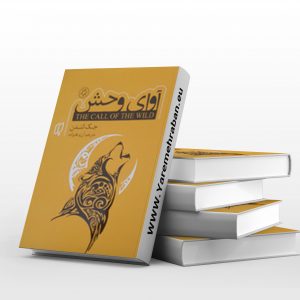


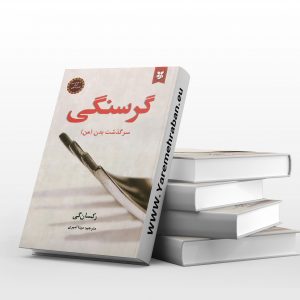

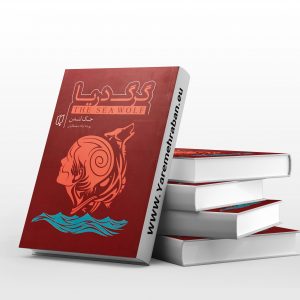

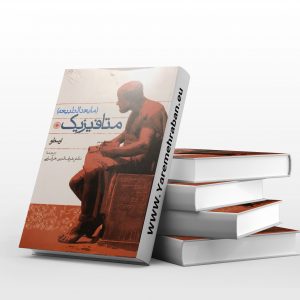
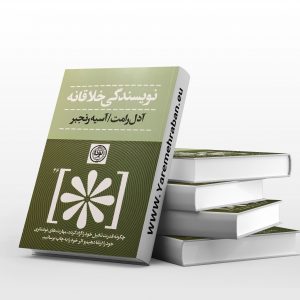

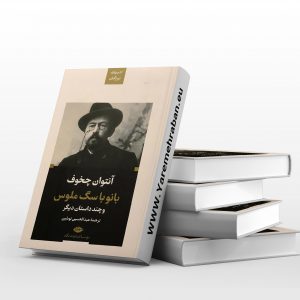
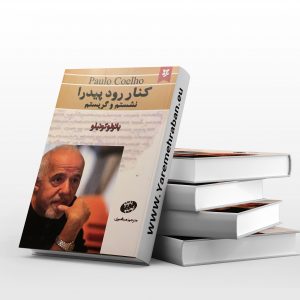
Reviews
There are no reviews yet.